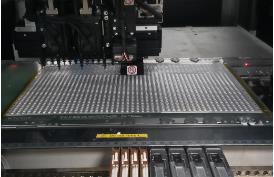1. After getting the bare PCB board, you should first conduct an appearance inspection to see if there are short-circuits, open circuits, etc., and then familiarize yourself with the schematic diagram of the development board, and compare the schematic with the PCB screen layer to avoid discrepancies between the schematic and the PCB.
2. After the materials required for PCB soldering are ready, the components should be classified. All components can be divided into several categories according to their size to facilitate subsequent soldering. Need to print a complete list of materials. In the welding process, if one item is not completed, use a pen to cross out the corresponding option, which is convenient for subsequent welding operations.
Before welding, take anti-static measures such as wearing a static ring to avoid damage to the components caused by static electricity. After the equipment required for welding is ready, the tip of the soldering iron should be kept clean and tidy. It is recommended to use a flat-angle soldering iron for the first soldering. When PCB soldering components such as 0603 packaged components, the soldering iron can better contact the pads and facilitate soldering. Of course, for masters, this is not a problem.

3. When selecting components for welding, the components should be welded in the order of low to high and small to large. In order to avoid the welding of smaller components caused by welding of larger components. Priority is given to soldering integrated circuit chips.
4. Before welding the integrated circuit chip, ensure that the chip placement direction is correct. For the chip silk screen layer, generally rectangular pads indicate the starting pins. When soldering, fix one pin of the chip first, fine-tune the position of the component, and fix the diagonal pin of the chip, so that the component is accurately connected and then soldered.
5. SMD ceramic capacitors and voltage stabilizing diodes in voltage stabilizing circuits have no positive and negative poles. Light-emitting diodes, tantalum capacitors and electrolytic capacitors need to be distinguished between positive and negative poles. For capacitors and diode components, generally the marked end should be negative.
In the package of SMD LED, the direction along the lamp is the positive-negative direction. For packaged components marked as diode circuit diagram by silk screen, the negative end of the diode should be placed at the end with a vertical line.
6. The PCB design problems found during the soldering process, such as installation interference, incorrect pad size design, component packaging errors, etc., should be recorded in time for subsequent improvements.
7. After soldering, use a magnifying glass to check the solder joints to check whether there is any false soldering or short circuit.
8. After the circuit board soldering work is completed, the surface of the circuit board should be cleaned with a cleaning agent such as alcohol to prevent the iron filings attached to the surface of the circuit board from short-circuiting the circuit, and it can also make the circuit board cleaner and more beautiful.
Extended information
The main factors that affect the solderability of printed circuit boards are:
(1) The composition of the solder and the nature of the solder. Solder is an important part of the welding chemical treatment process. It is composed of chemical materials containing flux. Commonly used low-melting eutectic metals are Sn-Pb or Sn-Pb-Ag.
The impurity content must be controlled in a certain proportion to prevent the oxides generated by the impurities from being dissolved by the flux. The function of the flux is to help the solder wetting the surface of the circuit to be soldered by transferring heat and removing rust. White rosin and isopropanol solvents are generally used.
(2) The welding temperature and the cleanliness of the metal plate surface will also affect the weldability. If the temperature is too high, the solder diffusion speed will increase. At this time, it will have high activity, which will cause the circuit board and the molten surface of the solder to oxidize rapidly, resulting in soldering defects. Contamination on the circuit board surface will also affect the solderability and cause defects. These defects Including tin beads, tin balls, open circuits, poor gloss, etc.